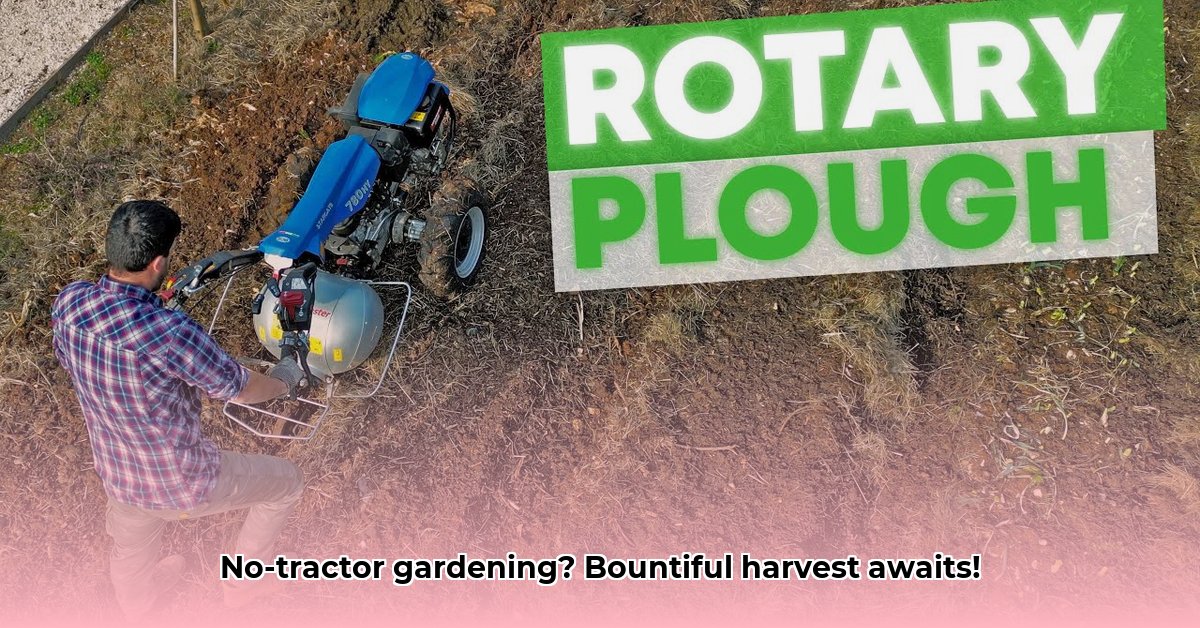
Want a healthier garden and a rewarding workout? Ditch the noisy tractor and discover the joys of manual plowing! This eco-friendly guide shows you how to prepare your soil without heavy machinery, creating a thriving environment for a bountiful harvest. It's easier than you think, and a fantastic way to connect with nature. For more on tractor-based cultivation, see this helpful resource. Let's get started!
Pre-Plowing Preparation: Setting the Stage for Success
Before you grab your shovel, a little prep work goes a long way. Just like baking a cake, you need the right ingredients and a clean workspace. First, determine your garden's size and shape. Next, clear away debris: rocks, weeds, and leftover plant material. Compost this material for nutrient-rich soil later! Crucially, conduct a soil test. This reveals your soil's needs (e.g., nutrients, pH adjustments). Knowing this beforehand ensures effective plowing and avoids future problems. Did you know that a soil test can increase your harvest yield by up to 20%?
Choosing Your Tools: Your Garden's Powerhouse Team
You don't need a tractor; you need the right tools! Each tool excels in specific situations, based on your soil type and the task at hand. Choosing wisely saves effort and protects your back.
| Tool | Description | Best Suited For | Potential Challenges |
|---|---|---|---|
| Shovel | Moves larger amounts of earth; great for initially breaking ground. | Loamy or sandy soils; initial garden bed preparation; moving larger amounts of soil | Can be tiring for large areas; less effective on very hard or clay soils. |
| Spade | Sharper blade; ideal for digging and precise turning. | Clay soils; digging holes and trenches; precise digging tasks. | Requires more strength and precision than a shovel; difficult on rocky soil. |
| Cultivator | Aerates soil; breaks up clumps without inverting. | Loamy soils; breaking up clods; weeding; loosening soil between plants. | Less effective on very compacted or extremely rocky ground. |
| Garden Hoe | Precise weeding and light soil refining. | All soil types but best for loose soil; weeding; shaping garden beds. | Not suitable for initially breaking hard ground. |
| Broadfork | Aerates soil minimally; ideal for no-till gardening. | All soil types, especially for no-till gardening; improving soil structure. | Requires a bit of technique to master effectively. |
Step-by-Step Manual Plowing: Turning the Soil
The best approach depends on your soil type. The main goal is to loosen the earth effectively without overexertion.
Method 1: The Chop-and-Lift Method (Many Soil Types):
- Dig vertically with your shovel or spade, creating smaller blocks.
- Chop these blocks with the tool's edge.
- Gently lift and turn the loosened sections.
Method 2: Taming Clay (Clay Soils):
- Use your spade to break heavy clay into manageable pieces. Add a little water if needed.
- Work steadily on small areas.
- Let the soil rest before planting.
Method 3: Gentle Approach for Sandy Soils (Loose, Sandy Soils):
- Use a cultivator or broadfork to lightly aerate, preserving soil structure.
- Add compost or amendments easily.
- This gentle method promotes healthy drainage.
Post-Plowing Pampering: Nourishing Your Soil
After plowing, incorporate compost or organic matter and mulch to retain moisture. This post-plowing care ensures a healthy, fertile garden.
Troubleshooting: Conquering Common Challenges
Rocks and stubborn roots are expected. Carefully remove rocks; for roots, a sharp spade helps. Planning and the right tools make a big difference!
Wrapping Up: Your Bountiful Harvest Awaits
By following these steps, you'll cultivate your garden successfully without heavy machinery. Enjoy the rewarding experience of connecting with nature and reaping a bountiful harvest! Remember, practice makes perfect—experiment to discover what works best for your garden.